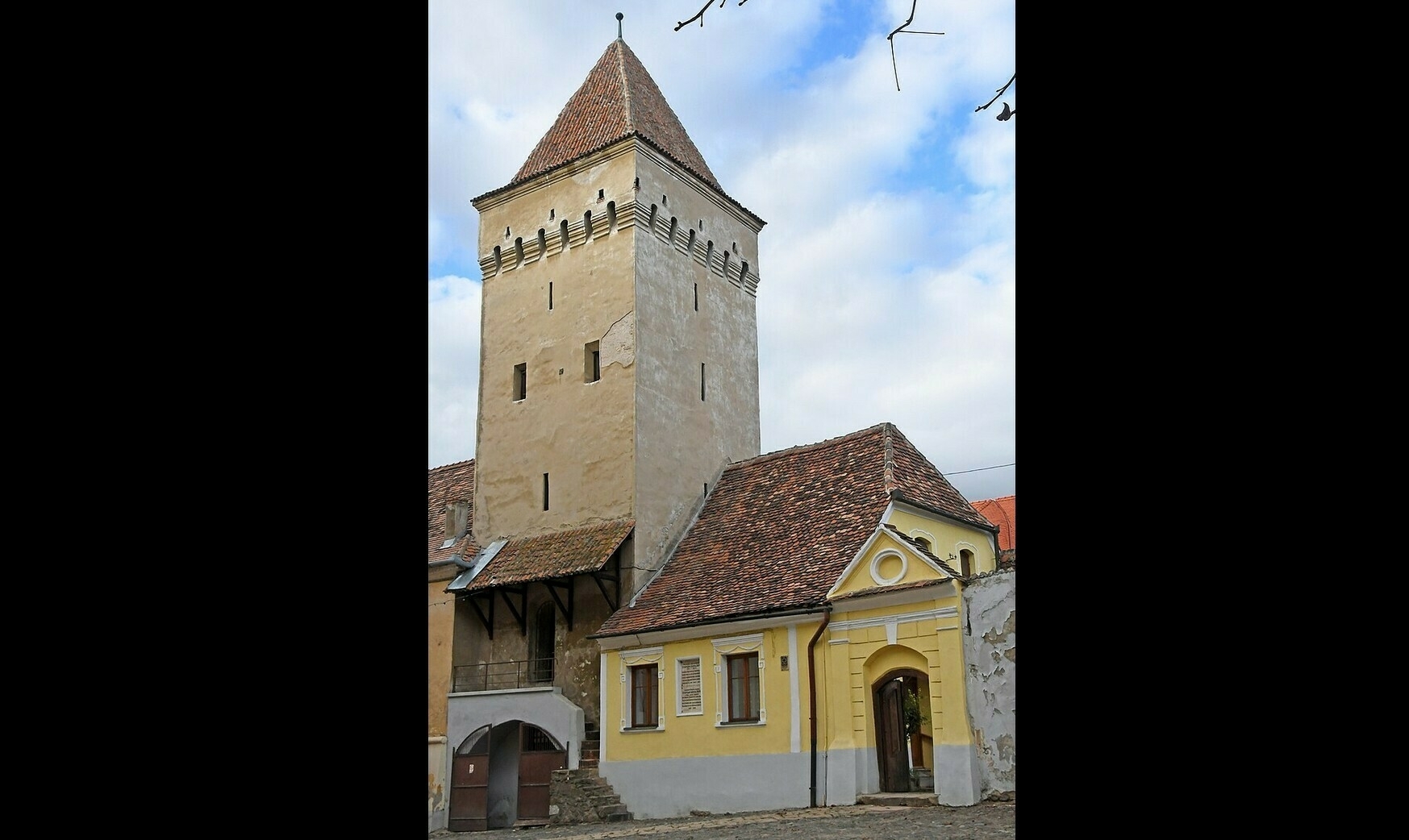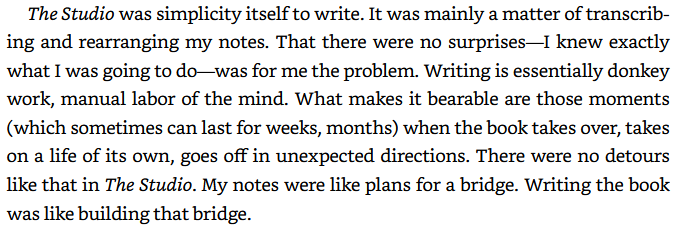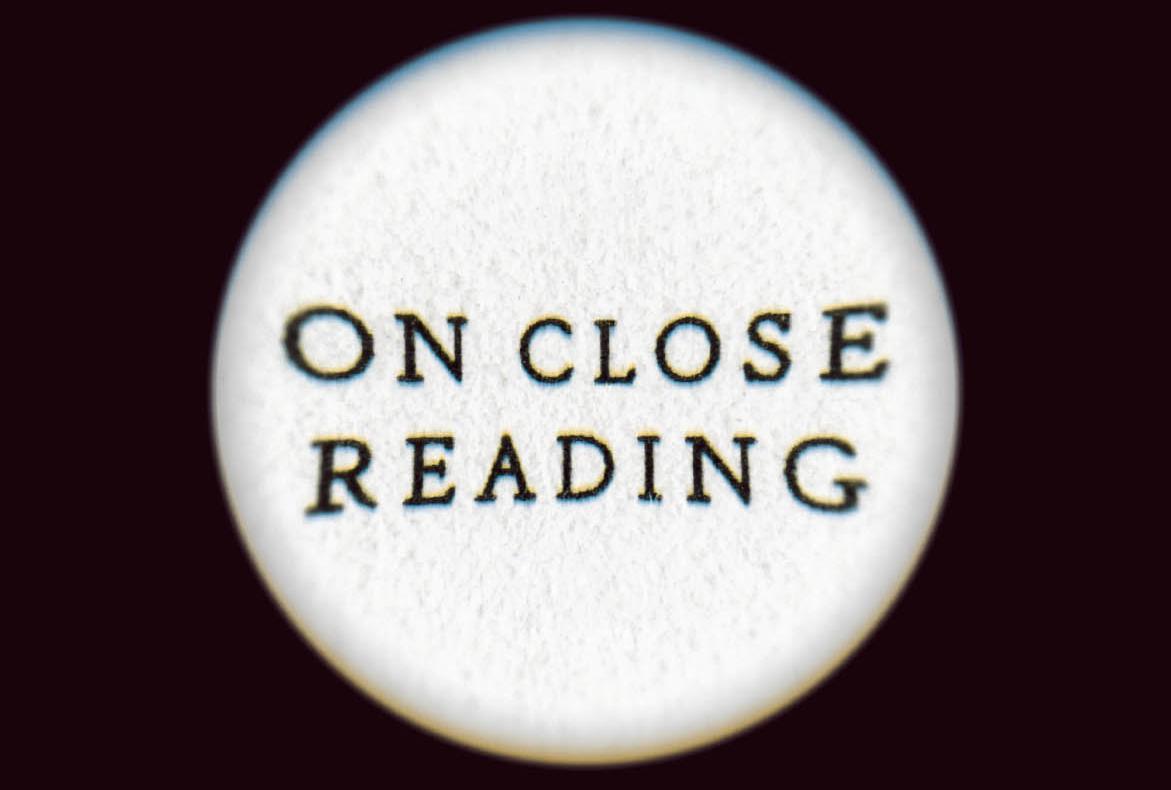article
-
but don’t take my word for it, what do I know? Read the book and the close reading archive. ↩︎
-
Using the Zettelkasten (or Bibliography Apparatus) as a Database
-
Collecting Reading Notes without writing Permanent Notes
-
Treating Blank Reading Notes as “To Read” list
-
Forgetting to write notes while reading
What comes after content?
The decline of Hollywood has been attributed to the rise of AI-generated ‘content’, leading to a potential cultural shift towards more authentic human creativity. This article explores what comes next and points out the radically new may not be quite as new as it appears.
The Lost Medieval Library Found in a Romanian Church medievalists.net
Old news, but new to me. I’d love to find a lost medieval library in a tower somewhere, but I might be on the wrong continent for that kind of discovery.
HT: @glynmoody@mastodon.social
Image: Ropemaker’s Tower, Mediaș, Romania (Source. CCby SA4.0)

My notes were full but my heart was empty. Doug Toft travels beyond progressive summarization
Doug Toft discusses his struggle with summarizing reading notes and suggests that writing about what you read, as opposed to simply taking notes, can enhance understanding and retention.
Publishing slowly
I’m writing so slowly that you might be wondering if I’m ever going to get anything published.
Well wonder no more. I’m happy to say extracts of my memoir, ‘The Green Island Notebook’ are published in the anthology Destinations & Detours: New Australian Writing.
Published by Detour Editions, the collection launches here in Sydney on Sunday 2nd March 2025, and if you happen to be in the vicinity, I’d be delighted to meet you in person.
Book Launch 2pm, Sunday 2nd March, at Randwick Literary Institute, 60 Clovelly Road, Randwick NSW

Watch out too for news of how you can get your hands on a copy, wherever in the world you find yourself.
And this isn’t the only news on the publishing front. I’ll be sharing details of some further publishing adventures very soon.
But don’t worry, whatever happens, I’ll still be writing slowly.
Update: Oh look, I wrote another book: Shu Ha Ri: The Japanese Way of Learning, for Artists and Fighters.

Randwick Literary Institute, the venue for our book launch, celebrates its 100th anniversary in 2025. Here it is in 1957, and it hasn’t changed much since then:


Subscribe to the Writing Slowly weekly digest (unsubscribe any time):
To care is to disobey
The book Pirate Care discusses how the act of caring for others has been criminalized, and it advocates for a grassroots political practice of solidarity against oppressive legal measures.
Making meaning where there is none
A quote by Italian author Roberto Calasso parallels the enigmatic environment of Piranesi’s world, in a novel where meaning is derived from seemingly disconnected elements.
Create a note system that indexes itself
Niklas Luhmann’s Zettelkasten system exemplifies a self-indexing record-keeping method. It allows efficient organization of notes through associative linking rather than through traditional indexing.
Semantic line breaks are a feature of Markdown, not a bug
The adoption of semantic line breaks in Markdown enhances clarity by encouraging writers to isolate each sentence while allowing for visually appealing paragraph formatting. It’s a superpower I didn’t know I had - until now.
Maybe you can create coherent writing from a pile of notes after all
“My notes were like plans for a bridge”.
I’ve argued that you can’t create good writing just by mashing your notes together and hoping for the best. That’s the illusion of connected thought, I’ve said, because you can’t create coherent writing just from a pile of notes.
Well, maybe I was wrong.
Perhaps a strong or experienced writer can do exactly that. Here’s John Gregory Dunne, the journalist husband of Joan Didion, in the Foreword to his 1968 book on Hollywood, The Studio:


I imagine he wasn’t just a good writer, though.
Surely he was first a very good note-maker.
I’d like to hear about people’s experiences, good and bad, of using their notes to create longer pieces of writing. Was it like building a bridge, or perhaps like building a bridge out of jelly?

HT: Alan Jacobs, who draws a different but very valid lesson from the anecdote.
Stay in the Writing Slowly loop and never miss a thing (unless you don’t get round to opening your emails, in which case, yeah, you might miss a thing. Anyway:
Read better, read closer
For anyone seeking clues on better techniques for reading, Scott Newstok, author of How to Think Like Shakespeare, has created a marvelous resource: a close reading archive. Here is where all your close reading questions will be answered, including, what is it? how do you do it? what have people done with it? and does it have a future in a digital age?
Close reading is one of those two-word phrases that seem to take on a life of their own. Anyone connected to the humanities has probably heard of it, but it’s not necessarily well understood. Is it finished? Apparently not. Not at all.
Professor Newstok’s close reading archive is an openly available companion to John Guillory’s cultural history, On Close Reading, published January 2025.
Newstok is also editor of a book on Montaigne’s view of teaching, which is how I discovered Gustave Flaubert’s endorsement of what might perhaps be seen as a kind of close reading avant la lettre1:
“Read Montaigne, read him slowly, carefully! He will calm you . . . Read him from one end to the other, and, when you have finished, try again . . . But do not read, as children read, for fun, or as the ambitious read, to instruct you. No. Read to live.”

Now consider: three ways to make notes while reading.
For even more, please subscribe.
Improve your notes (and your life) with two-word phrases
I’ve been discovering the power of two-word phrases in innovation and branding. This article illustrates their impact through historical examples and modern applications.
Year in books for 2024
Happy New Year!
Here are some of the books I finished reading in 2024.
Happy New Year!
Do you have annual reading goals? And do you kep a record of your reading? I posted a little gallery of the books I finished reading in 2024. Micro.blog, the web service I use, is great for this. But it only works if I actually use it! Which is why only some of my reading was captured.
So my reading resolution for 2025 is to be more systematic in recording my reading.
In the past few years I’ve set a target. This has helped me to understand my reading cadence, but now I know it, I don’t really need a target any more. It’s not like there’s a big reward to be had for reading 1000 books a year!
How about you? How do you keep track? What works? And do you have any specific book goals for 2025?
Zettelkasten anti-patterns
When developing your Zettelkasten, your collection of linked notes, what have you learned not to do?
Mathematician Alex Nelson keeps a paper Zettelkasten, and has posted online about how he does it. He calls this Zettelkasten best practices.
But Nelson also lists some ‘worst practices’ to avoid, which he calls anti-patterns.
So I’m wondering, do you have any other examples of ‘Zettelkasten anti-patterns’ from your own experience?
For reference, here are the ‘anti-patterns’ Nelson identifies. I’m not going to explain these here, though, because you can read the post for yourself:
Are there any more Zettelkasten worst practices, and how have you avoided them?
Atomic notes and the unit record principle
Thinking about atomic notes
Researcher Andy Matuschak talks about atomicity in notes, an idea also developed by the creators of the Archive note app, at zettelkasten.de.
To make a note ‘atomic’ is to emphasise a single idea rather than several. An atomic note is simplex rather than multiplex. And this form of simplicity relates to the idea of ‘separation of concerns’ in computer programming.
Back to the unit record principle
But the idea is much older than this. I found something very similar described in 1909, in The Story of Library Bureau.
How to write a better note without melting your brain
There’s a great line in Bob Doto’s book [A System for Writing][2] which goes like this:
“The note you just took has yet to realize its potential.”
Haven’t you ever looked at your notes and had the same thought? So much potential… yet so little actual 🫠.
Perhaps you jotted something down a couple of days or weeks ago and returning to it now you can’t remember what you meant to say, or what you were thinking of at the time.
Or perhaps you made a great note then, but now you can’t find it.
Or maybe you just know your note connects to another great thought… but you can’t for the life of you remember what.
Well I already make plenty of half-baked notes like these, but how can I make them better? It’s not something they teach in school, so most of us don’t even realize there’s untapped potential, if only we could access it.
So, how can I make worthwhile notes from my almost illegible scribbles on the fly? Well, here’s what works for me. Maybe it’ll work for you too.
When writing my notes, I just have a few simple rules that I mostly stick to:
Not just notes: another meaning of 'Zettel'
In German, Zettelkasten, quite simply, means ‘note box’. But there’s another, more hidden meaning of the word Zettel (note) that even German-speakers may know nothing of.
All the same, it’s useful for thinking with.
Busybody, hunter, dancer - which is your curiosity style?
Are you curious about your world? If so, what does your curiosity look like? How does it feel, and how does it move? And could you expand your repertoire of curiosity?
In other words, could you practise curiousity differently?
Three styles of curiosity - so which one is yours?
I’m interested in what it means to be curious. So I was intrigued by a new study about curiosity that I found via The Conversation.
The study examined the different ways nearly half a million Wikipedia users read their way through its massive network of articles. It turns out these can be characterised as three different styles of curiosity.
The authors write:
“By measuring the structure of knowledge networks constructed by readers weaving a thread through articles in Wikipedia, we replicate two styles of curiosity previously identified in laboratory studies: the nomadic “busybody” and the targeted “hunter.” Further, we find evidence for another style—the “dancer””.
And what are these different styles? In very brief summary:
Why not make notes by hand?

So many note-taking apps in the app graveyard - but not all are zombies
While clearing out my desk recently I found a USB thumb drive with a whole heap of old note-taking apps on it. This drive dates from 2017, not even seven years ago, but it seems like ancient history.
These note-taking apps come and go and the only ones worthwhile IMHO are the ones with a format you can keep using, or at least access. Several, I’m happy to say, had easily re-usable plain text files in a ‘data’ folder or similar.
So why am I mentioning this?


















